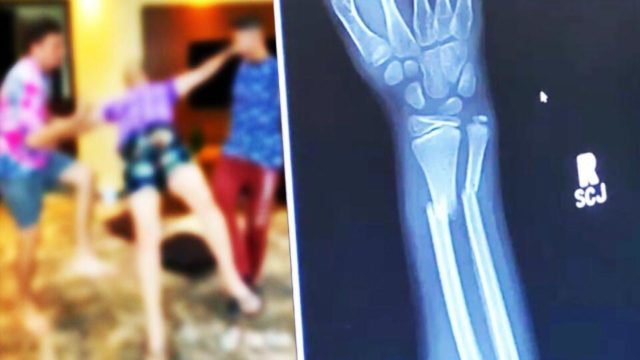Should parents be worried?
The first time I heard about a weird online challenge where children deliberately trip one another up was on a parents’ Whatsapp group that I belong to.
One of the moms posted a video with the caption “please warn your children and share with all the parents you know. This is now trending in schools; two school kids already died because of this.”
By the time the video montage was doing the rounds on social media, there wasn’t a name for it yet. Now it’s been dubbed the TikTok skull breaker challenge.
A quick Google search shows most of the stories originating in India, Australia and the rest of the world. According to the Pretoria News, a video showing three young boys from a high school in the Pretoria Moot area has already emerged.
The challenge originated in South America, heavy.com reported. An Arizona parent then shared a public Facebook post warning that her son had been injured.
The post quickly went viral and from there various news outlets across the world picked up the story, reporting on injuries and bullying tactics used to coerce kids to participate.
But here’s the thing. When the Tide Pod challenge took hold in 2018, there were no cases reported in SA of child being rushed to the emergency ward to be treated for ingesting the detergent.
The same goes for the Blue Whale Challenge which started out as a hoax but then was exploited by dark forces, encouraging children to self-harm.
The list of online challenges goes on and on. From the Kylie Jenner lip challenge to the Ice Bucket challenge, it’s hard to keep up.
But at the end of the day, children across the world, including our own, can fall prey to these sometimes dangerous challenges. As stated in our previous story on the skull breaker, they can incur massive head injuries.
So why the tomfoolery and the need to participate?
Cape Town-based clinical psychologist Rafiq Lockhat gives some insight. He starts with giving it context. “Take the In My Feelings challenge. The ones I remember were the videos where people got hurt. Those became the popular ones,” says Lockhat.
“You don’t need to do anything special to become popular. This proves that a) anyone can do this; and b) you can instantly become famous if you have a thousand likes.”
He emphasises that what’s important when it comes to challenges like this one, is that everyone notices you. You’re young and you don’t have to understand the consequences.
Lockhat also delves into the need for instant fame and recognition. We’re in the age of constantly having to compete with the likes of influencers, big brands and the yearning to be noticed.
It’s a novelty that’s become ingrained into a teen’s mind. He’s of the opinion that there’s a real risk that the video that gets the most hits is the one where someone will get hurt. “The consequences are irrelevant. Many young people are vulnerable to this,” he warns.
A teen’s developing brain could also prove a vital clue.
According to the American Academy of Paediatrics, the part of the brain that handles rational thought (the prefrontal cortex) is not fully developed until your mid-20s.
In short, teens tend to be more impulsive and act before thinking of the effects.
Leading child researcher Dr Kristy Goodwin also says that the adolescent brain is vulnerable to the pitfalls of social media.
During an 2017 interview with Newscom.au, she agreed that a sense of “peer acceptance” was what compels some teens to take up these challenges, no matter how harmful or risky they may be.
“Social media caters to so many of our basic needs to feel connected and competent.
“Because we’re humans and we want to feel like we’re connected, there’s almost a sense of allegiance. If I emulate what others are doing, I’m fitting in,” she said.








